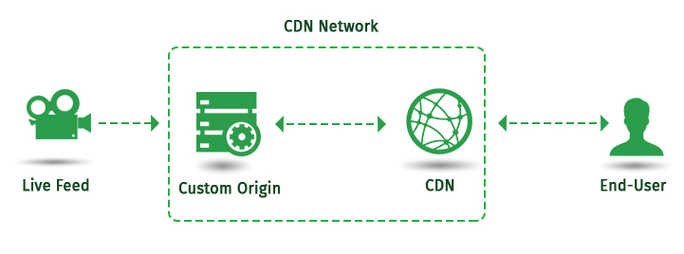CDN origin server: understanding how it works

One search phrase that’s been looked up on Google several times over now is ‘CDN origin server.’ Technically, CDN origin server isn’t an actual term, but it does make sense when grounded properly against the right context. For starters, CDN for websites makes so many things even better—from speed to security, sites that are backed up by a CDN provider notice results almost immediately. It also helps that the entire CDN structure is made up of multiple servers strategically placed in various parts of the globe.
In order to organically and rightfully explain what a CDN origin server is and what role it plays in CDN architecture, let’s talk about how CDN for websites works. To begin, understand that every website that’s ever graced the digital space is managed by a web host. Popular examples of these are WordPress, Squarespace, and Go Daddy; all these web hosting sites have origin servers that are located in one base. That could be anywhere in the world: Tokyo, Toronto, Melbourne. Depending on which web host you choose, their origin server could be hundreds of miles away from where you are at present.
That said, websites that don’t utilize a CDN rely on their web host origin server at all times. Picture this: let’s pretend you run an online bracelet store that caters mostly to the North American market. Still, your operations encompass global coverage and anyone from Asia and Europe is free to make purchases, too. For your website, let’s assume it’s being managed by a web host origin server found in Toronto, Canada. In this example, any user that’s arguably nearer Toronto, or in the North American region at least, will not have problems accessing your website. This is because they’re consuming your content from the origin server.
But what about your patrons who live in Singapore? Or Egypt? Or Sydney? Because of the distance between Toronto and these places, you can already bet users who live on the opposite side of the world access your site with noticeable lags. CDNs eliminate the distance between the origin server and your users because the CDN architecture allows for your web data to exist and be stored in multiple servers all at once.
Simply put, the whole CDN origin server search is an inquiry to understand how CDN architecture is built around improving browsing experiences and enhancing digital encounters altogether. That being said, CDN origin server, in itself, is a questionable term since CDNs and the origin servers are different things. But because they all involve servers, it’s become understandable why CDN origin server has become a coined term.
CDN origin server: the internet process
Once you learn what impact CDN for websites carries, approaching the technology becomes easier to digest. It’s pretty straightforward: all your web content is stored in the origin host—which could be anywhere in the world. When you don’t sign up with a CDN provider, your web content stays only in the origin host and your users have to obtain the data from the origin server. This could take time depending on where your users access your site from. When you sign up with a CDN provider, your web data can be cached in your provider’s many Points of Presence.
In other words, the CDN architecture makes it easy for your web data to be readily available to your global audience at all times. What’s more, making use of a CDN also enables more reliability for your site because your site’s origin host is less likely to be burdened by large traffic spikes. This is because your web content is evenly distributed across many servers. That being the case, when you have a visitor who accesses your site from the far end of the globe, they consume your content from their edge server—meaning the server that’s nearest them; be it in a neighboring country or region.
All things considered, one of the most important things to ask a CDN provider during your shopping phase is where their locations are. This helps you narrow your options and sign up with the best provider for you; not only in the CDN architecture aspect, but also in the budget department. CDN for websites shouldn’t be expensive, nor should it be exclusive to elite companies with massive finances to spend.
CDN for websites: is it time?
Granted the CDNs now accommodate more than 50% of the Internet, the chances of your website needing a CDN is high. Still, this all depends on what kind of media your website mostly has and if you have growing internet traffic. When you notice more and more users coming in from more than one part of the globe, it might be the perfect time to get a CDN,
Power-up your Content Delivery
30 Day Free Trial Cancel Anytime